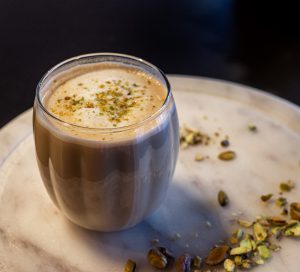The African American experience is part of the cultural tapestry that makes Washington DC such a dynamic city.
Despite the harsh reality of segregation, from the end of the 19th century through the early 20th century, Black folks thrived in the U Street corridor—known as Black Broadway. The Northwest DC neighborhood was a haven for African American performers like hometown hero Duke Ellington and Black businesses like the famed greasy spoon, Ben’s Chili Bowl (still serving up chili slathered half-smokes with a smile). Founded in 1867, Howard University—aka the mecca of Black education—has produced a who’s who list of Black excellence, including Supreme Court Justice Thurgood Marshall, actor Chadwick Boseman, choreographer Debbie Allen and author Toni Morrison. On the political front, African Americans continue making trailblazing strides, notably Muriel Bowser, the first woman to be re-elected Mayor of the District of Columbia.

Ben’s Chili Bowl has been serving from this landmark location since 1958.
Although America’s first predominantly Black city can no longer be called “Chocolate City” (that’s a nice way of saying gentrification is afoot), Washington DC is still home to change-making African American scholars, artists and social activists and is dripping with Black history highlights, along with Black cultural attractions and landmarks.*
Here are our top five picks:
1. At the Smithsonian National Museum of African American History and Culture, get a comprehensive overview of the African American experience—including the horrors of slavery, the bravery of the Civil Rights Movement, and the unapologetic pride of the Black Power Movement. The regal museum houses more than 36,000 artifacts, and the achievements of groundbreaking Black activists, athletes and performers take center stage. The building alone is stunning, designed by architectural icon David Adjaye. Insider tip: The Sweet Home Cafe dishes some of the best soul food in town—we’re talking light and flaky fried catfish and gooey baked mac and cheese.

The Contemplative Court at the Smithsonian National Museum of African American History is truly striking. Photo Credit: Alan Karchmer, courtesy of NMAAHC.
2. Through educational and interactive exhibits, the African American Civil War Memorial champions the overlooked Colored Troops who fought to preserve the Union in the Civil War. And don’t miss the nearby African American Civil War Memorial, inscribed with the names of over 200,000 Black soldiers and sailors.
3. Take a guided tour of the Frederick Douglass National Historic Site, which preserves and replicates the freedom fighter’s final home, known as Cedar Hill. The 21-room Victorian mansion is perched atop a hill in DC’s historic Anacostia neighborhood and happens to be a great spot for an idyllic city view.
4. In the city’s Logan Circle area—a refuge for escaped slaves and freedmen during the Civil War—visit the Mary McLeod Bethune Council House and learn more about the tireless work of the educator and Black women’s rights activist. The tony 15-room townhome was the first national headquarters of the National Council of Negro Women, which McLeod founded in 1935, and is her last known residence in DC.
5. Nestled near the Tidal Basin and surrounded by cherry blossoms when the trees are in bloom, the Martin Luther King Jr. Memorial is a towering tribute to the civil rights hero. The majestic granite monument overlooks other iconic memorials along the National Mall and is engraved with quotes taken from King’s famous 1963 “I Have a Dream” speech.

A mighty Dr. Martin Luther King Jr. is forever memorialized in this granite tribute. Photo Credit: Bee Calder via Unsplash.
*With things being the way they are, don’t forget to plan ahead and double-check business hours and days of operation for the locations listed above.




